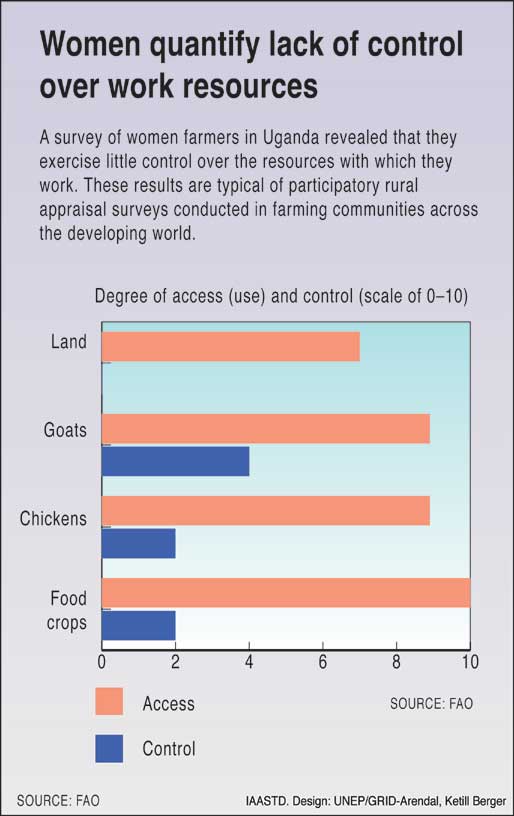
Figure SR-WA2. Women quantify lack of control over work resources.
developing countries usually have less access than men to education, information and to learn how to use new technologies. Hence, this affects their ability to make informed choices around crop selection, food production and marketing. Notwithstanding a rise in the number of women pursuing careers in biosciences worldwide, female researchers still tend to be underrepresented in agricultural sciences and in senior scientific positions in general. Only 15% of the world's agricultural public sector extension agents are women [Global Chapter 3]. Women's access to extension is limited by lack of access to membership in rural organizations which often channel or provide training opportunities, and by gender blind agricultural policies that give inadequate attention to women farmer's needs in terms of crops and technology. Lack of opportunity in the curricula and training of extensionists to analyze gender roles and differential needs continues to exclude women from training and the benefits of extension services.
Although in most countries women have lower rates of access to ICTs, there are increasing examples of the use of ICTs by women to generate income (e.g., selling phone time in Bangladesh), obtain information, communicate with governments, and make their voices heard. In India, local women use video and radio equipment to record and produce the messages they want others in their community to hear (e.g., Deccan Development Society). The Farmwise

Figure SR-WA3. The percentage of agricultural work carried out by women compared to the percentage of female extension staff in selected African countries.
project in Malawi uses a computer database system with web interface and email to help women farmers determine what they can expect to harvest from their land, which crops they can grow given the soil type and fertility, and what inputs they should use [Global Chapter 6].
Access to information influences the ability of farmers to have influence in their communities and their ability to participate in AKST decision-making. Women's representation in AKST decision-making at all levels remains limited (e.g., women in Benin held 2.5% of high-level decision making positions in the government [Global Chapters 1,2]. Women farmers' access to membership and leadership positions in rural organizations (e.g., cooperatives, agricultural producers' organizations, farmers' associations) is often restricted, by law or custom, which restricts their access to productive resources, credit, information and training and their ability to make their views known to policy makers and planners. The rise of women's Self-Help Groups (SHGs) or women's microfinance groups (e.g., in India) to some extent has made women's income a permanent component of household in-